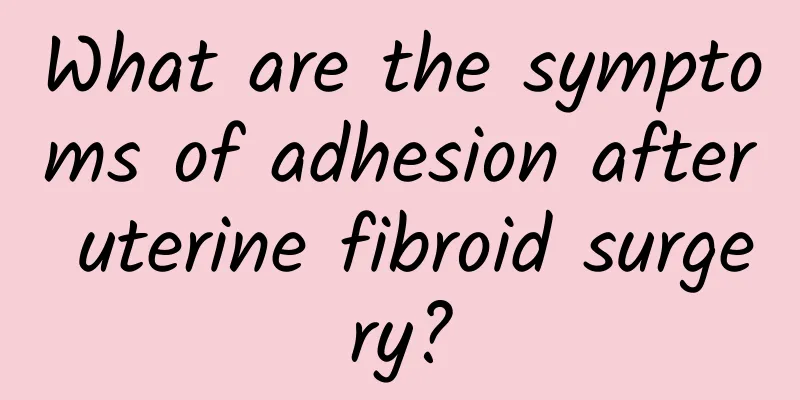What are the symptoms of adhesion after uterine fibroid surgery?

|
What are the symptoms of adhesions after uterine fibroid surgery? Uterine fibroids are the most common benign tumors in the female reproductive organs and one of the most common tumors in the human body. They are also called fibroids and uterine fibroids. Because uterine fibroids are mainly caused by the proliferation of uterine smooth muscle cells and a small amount of fibrous connective tissue exists as supporting tissue, they are more accurately called uterine leiomyomas, or uterine fibroids for short. Uterine bleeding is the main symptom of uterine fibroids, occurring in more than half of patients. Cyclic bleeding is heavy and can manifest as increased menstrual volume, prolonged menstrual periods, or shortened cycles. It can also manifest as irregular vaginal bleeding during menstrual cycles. Submucosal fibroids and intramural fibroids are more common in uterine bleeding, while subserosal fibroids rarely cause uterine bleeding. It is currently the most commonly used auxiliary diagnostic method. It can show uterine enlargement, irregular shape, number, location, size of fibroids, whether the inside of the fibroids is uniform or liquefied, cystic, etc. Ultrasound examination is not only helpful in diagnosing uterine fibroids, but also helps to distinguish whether the fibroids are degenerated, and also helps to identify ovarian tumors or other pelvic masses. The size and direction of the uterine cavity can be detected by the uterine cavity probe, and the shape of the uterine cavity can be felt to understand whether there is a mass in the uterine cavity and its location. For patients with abnormal uterine bleeding, it is often necessary to identify endometrial lesions, and diagnostic curettage is of great value. Under hysteroscopy, the morphology of the uterine cavity can be directly observed to see if there are any vegetations, which is helpful for diagnosing submucosal fibroids. Generally, MRI is not necessary. If it is necessary to identify and diagnose uterine fibroids or uterine sarcomas, MRI, especially enhanced delayed imaging, can help identify uterine fibroids and uterine sarcomas. Before laparoscopic surgery, MRI can also help clinicians understand the location of fibroids before and during surgery and reduce residual tumors. |
<<: Symptoms of ectopic pregnancy: early back pain?
>>: What causes left ovarian cyst?
Recommend
What are the dangers of menstrual disorders
Menstrual irregularities can have many adverse ef...
What should I do if I have multiple uterine fibroids? Are there obvious symptoms of multiple uterine fibroids?
Uterine fibroids are one of the common genital di...
Which department should I go to for an abortion?
Artificial abortion is a method of terminating pr...
3 milk weight loss recipes! Lose weight easily without going hungry
For friends who want to lose weight, milk is a go...
Diseases that should be differentiated from acute pelvic inflammatory disease
Acute pelvic inflammatory disease is more common ...
Treating Amenorrhea with Chinese Medicine and Diet
Dong, female, 36 years old. After "medical a...
Introduction to abortion methods in three months of pregnancy
Nowadays, unexpected pregnancy is normal, but for...
Brown sugar is absorbed quickly, so diabetics should limit their intake
Many people regard brown sugar as a health produc...
How are ovarian cysts diagnosed?
Clinically, ovarian cysts often present with lowe...
Eat too much during Chinese New Year? Homemade 2 kinds of anti-edema drinks
During the Chinese New Year, people do nothing bu...
What are the symptoms of tumorous ovarian cysts?
Ovarian cysts are a type of tumor in a broad sens...
Menopause can be relieved through diet, doctors recommend these 3
During menopause, you should supplement more estr...
Here are some ways to treat dysmenorrhea
Dysmenorrhea is a common problem for women during...
Are you a "holiday athlete" who is injured? Three warm-up exercises to reduce sports injuries
Are you a "holiday athlete"? Be careful...
Brief analysis of the four common symptoms of ectopic pregnancy
Many female friends may know about ectopic pregna...









